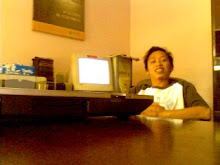The Art of the Interview
RESEARCH: The best questions are informed questions. Whether you have five hours or five days, gather clippings and court records and talk to the subject's cohorts.
TACTICS: Make a tactical plan and discuss it with a friend or colleague. Whenever possible, I interview people close to the action, while they are actually doing whatever it is I am writing about. However, whistle-blowers and reluctant targets are best contacted at home. You can calm a nervous source by taking him or her for a walk. And if you arrange a lunch appointment you can force a person to spend at least an hour with you.
ORGANIZE: Write single-word clues on the flap of your notebook to remind you of issues you want to cover. Organize paperwork so you won't fumble with it as you talk. Begin with softball questions (i.e., a chronological life history), but prepare a comprehensive all-purpose question for cases where the door might slam in your face.
INNER INTERVIEWING: As a warm-up (maybe during your morning shower), imagine a successful interview. Reporters who don't believe they will get the interview or the information usually fail. As far as I'm concerned, no one should ever refuse to talk to me. It works.
THE OPENER -- The techniques of "inner interviewing" continue. Never approach your subject as though they seem menacing or likely to clam up. Appear innocent, friendly, unafraid and curious. If you are a hard-boiled, cynical reporter who talks out of the side of your mouth, you will need acting lessons.
PAY ATTENTION TO DETAIL: Inventory the room thoroughly and in an organized fashion. Look at the walls, read the top of the desk and study the lapel pin. You'll get clues and details for your story. Make notes on what you see.
LOOK FOR OTHER SOURCES: While at the interview, meet the secretary and the other co-workers and make note of details about them. This will come in handy as you turn them into sources.



No comments:
Post a Comment